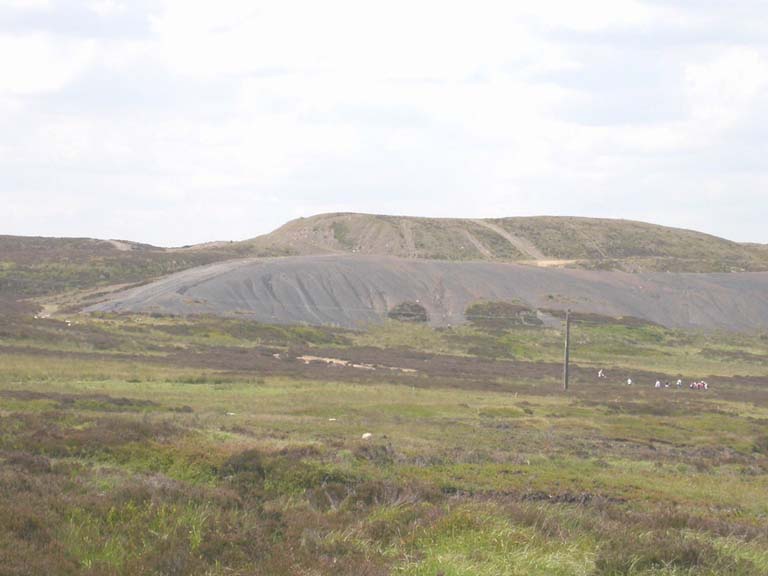Blaenavon
HLCA 010 Canada Tips and Blaen Pig

HLCA 010 Canada Tips and Blaen Pig
Extractive landscape dominated by WWII opencast workings and waste tips. Nineteenth century industrial extractive features related to quarrying and mining. Historic associations.Back to map
Historic Background
The historic landscape area of Canada Tips and Blaen Pig encompasses the limits of the Canada tips to the south and other opencast workings to the north. Remnants of the earlier surviving industrial landscape are to a limited extent included in the area due to difficulties in establishing exclusive boundaries in the modern landscape.
The earliest features noted in the area are cairns relating to Prehistoric funerary and ritual activity (1st edition OS map); these, including 'Careg-Croes-Ifor', were destroyed by activities of opencast mining during the twentieth century.
During the nineteenth century industrial extraction of raw materials for Blaenavon ironworks took place; despite the later opencast activities, features relating to these earlier workings still survive in the area. The main extraction area was Blaen Pig, served by tramroad, where both coal and iron ore was exploited by a number of pits, quarries, hushes and levels. Other pits were situated near Rose and Riverside Cottage, both now destroyed. Most of the pre-opencast industrial working had gone out of use by the 1880s.
In the 1940s the Canadian Army aided development of opencast working for the war effort, the remains of which are known as the Canada Tips. This method of coal extraction through surface mining, previously unknown in Britain began in 1941 using machinery from the United States and Panama. By 1944, output at the site was 8.65 million tons, equating to almost 5% of Britain's total coal output. Between 1945-8 further opencast working took place at Pwll Du and Blaen Pig.
Historic Landscape Characteristics
Canada Tips and Blaen Pig retains some nineteenth century industrial features. However, the dominant characteristic is that of the World War Two opencast workings of the Canada Tips, believed to be the only surviving unrestored, early opencast workings in Britain. The area is characterised by a 'lunar landscape', of workings with partially vegetated tips, on a grand scale. Earlier tips are also characteristic, and examples survive intact along the fringes of the area near Pen-ffordd-goch and Pwll Du.
Surviving industrial features of the area include tips, hushes, pits, drift mines, levels and leats at Blaen Pig. A minor, though still important, characteristic is transport features; a number of tracks were present in the area and later tramroads including the upper half of the Dyne Steel Incline, the line of which is still visible running through the area.
Historic persons associated with the area include Graham Sutherland, an official War Artist during World War Two, who produced a series of paintings of the Canada Tips in 1943.